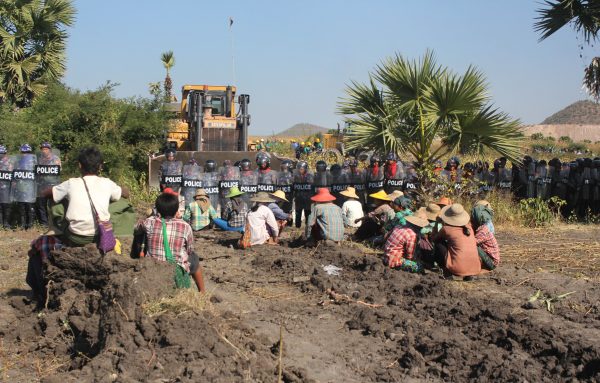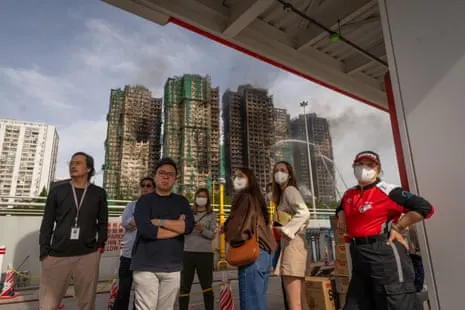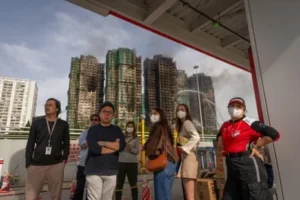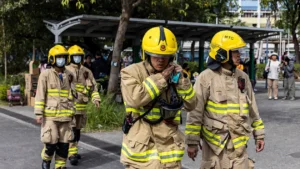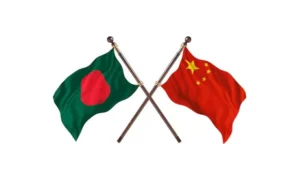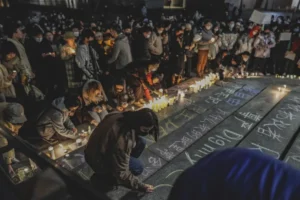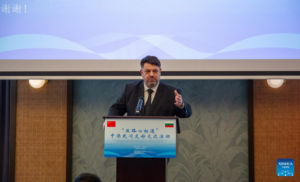Business as Usual: Chinese Investments After the Myanmar Coup
Paradoxically, collaboration with the Myanmar military could mean more instability for Chinese investments in the long run.
Since the coup in Myanmar on February 1, some foreign investors have pulled out, suspended, or scaled down their businesses in the country. Chinese state-owned enterprises (SOEs), however, have seized the opportunity to advance the Belt and Road Initiative (BRI), Beijing’s flagship diplomatic tool.
Among the ongoing and perspective BRI projects in Myanmar, the $1.3 billion Kyaukphyu deep sea port, with investment from CITIC, is the most strategic component, because the port city can offer China’s Yunnan province a shortcut to the Indian Ocean. During Chinese President Xi Jinping’s visit to Myanmar in January 2020, the BRI was the top agenda item. In January 2021, just before the coup, Beijing nudged Naypyidaw to speed up construction on BRI projects, including the deep sea port and special economic zone (SEZ).
Despite Myanmar’s political turmoil, BRI projects are proceeding with the military junta’s assurance. In February 2021, China Power began the construction of the Kyaukphyu gas-steam combined cycle power plant project. The $180 million project will contribute to the operations of the deep sea port and SEZ. Additionally, the junta replaced the Kyaukphyu SEZ committee with new members to implement the projects. In March, Yunnan Provincial Energy Investment Group’s Mee Lin Gyaing natural gas power plant project in Ayeyarwady region, worth $2.5 billion, was approved by the military government. Other BRI projects are on the way.
Beijing has been eager to craft an image of itself as a responsible power. The narrative of a “community of shared future for mankind” aims to convince partner countries that the BRI could foster mutual gains. In the face of BRI project controversies, some argue that SOEs are defying Beijing’s overseas investment guidelines. This view disregards Beijing’s ability to use the party system and policy bank loans to influence the SOEs. A lack of social and environmental compliance in host countries is rooted in Beijing’s state-centric foreign policy, which overlooks host countries’ societal actors. Nevertheless, this does not imply that China-backed investments are largely irresponsible.
To cite a specific case in Myanmar, the Chinese SOE Wanbao’s involvements in the Letpadaung copper mine were reactive to the ebb and flow of domestic pressure during the host country’s political transition in the 2010s. Social resistance and the government’s quest for legitimacy jointly shaped and reshaped the Chinese investors’ business practices. Wanbao improved social and environmental compliance with the rise of domestic constraints but had little incentive to accommodate the impacted community’s demands when pressure died down.
Enjoying this article? Click here to subscribe for full access. Just $5 a month.
Through the 2010s, Wanbao’s operations evolved from a business-as-usual manner to tactical adjustments to minimal compliance, and then slid back to business as usual. The changes were not arbitrary but corresponded to the variations in social resistance and Naypyidaw’s pressure.
Wanbao implemented the project in a business-as-usual manner at the beginning of Myanmar’s democratic transition in 2011. Even though villagers were coerced to sign agreements to give up their land for less than the market rate, Wanbao shifted the burden to Naypyidaw. When both social resistance and the government’s quest for legitimacy were weak, the Chinese SOE acted the same way as it had during the previous military rule.
Diplomat Brief Weekly Newsletter N Get briefed on the story of the week, and developing stories to watch across the Asia-Pacific. Get the Newsletter
Wanbao began to engage with societal actors in the face of vehement anti-mine protests when political opportunities expanded in 2012. Naypyidaw still prioritized diplomatic relations over popular legitimacy, but Wanbao reckoned that it could no longer ignore local grievances. Strong social resistance accompanied by weak political pressure prompted the Chinese SOE to work with journalists to gain public support. Wanbao’s tactical adjustment in the project was observed.
Naypyidaw was determined to continue the project. It brutally cracked down on anti-mine protests in late 2012 and subsequently sparked nationwide protests. The government then sought to save its legitimacy amid growing social discontent. Unexpectedly, then-opposition leader Aung San Suu Kyi also supported the project’s continuation and discouraged villagers from protesting. Social resistance died down immediately. Weak social resistance exploited by strong political pressure resulted in a revised agreement in Naypyidaw’s favor. Wanbao was also pushed to carry out minimum compliance by strengthening corporate social responsibility (CSR) programs.
In April 2016, Aung San Suu Kyi became the de facto leader of the country after winning the general elections. Contrary to the expectation that a more democratic government could promote more responsible investments, Wanbao’s operation became more inward-looking in its operations. The popular Aung San Suu Kyi-led government did not care much about the mining project. The impacted community refrained from opposing the project, which would have contradicted the leader’s preference. Wanbao’s operation slid back to a business-as-usual model. The SOE was reluctant to engage with villagers and labor unions. It even stopped publishing CSR reports.
Ideally, BRI projects could achieve local buy-in if the host country intends to continue bilateral cooperation. The scenario is more likely to happen when both social resistance and the government’s quest for legitimacy are strong. In such a case, the investor will be left with no option but to reform its business practices. Participatory development is more likely to take place. However, this scenario did not happen during Myanmar’s political transition.
The shifts in the magnitude of social and political forces in Myanmar not only explained the changes in Wanbao’s business behavior in the 2010s, but also shed light on ongoing BRI projects. In the wake of the brutal repression of protests and internet shutdowns, organized protests are challenging and risky. When social resistance and the military’s quest for legitimacy are both weak, Chinese SOEs have the propensity to implement BRI projects in a business-as-usual way.
Even if Beijing genuinely believes that the BRI could bring jobs and prosperity to Myanmar, societal actors’ preferences should not be ignored. Since the coup, Myanmar citizens have accused Beijing of backing the military junta. No evidence supports this claim; nonetheless, Beijing’s position on the coup and economic cooperation with the junta fuel people’s distrust.
If Myanmar restores democracy some day, resistance to BRI projects implemented under military rule would be inevitable. If the new democratic government opts for project continuation, Chinese SOEs will probably enable participatory development in their projects with strong domestic constraints. If the new government decides to cancel projects, however, long-term Chinese economic interests could be threatened.
By continuing the BRI projects, it appears that Beijing is confident that the military can remain in power. This affirms the proposition that societal actors are in the backseat of Beijing’s foreign policy unless they demonstrate the ability to influence their governments’ policies.
Enjoying this article? Click here to subscribe for full access. Just $5 a month.
Following the fall of Kabul, Beijing stated that it respected the “choices of the Afghan people.” Setting aside the question of whether the Afghan people have a choice, Myanmar people’s voices are loud and clear. Will Beijing respect their choice?
